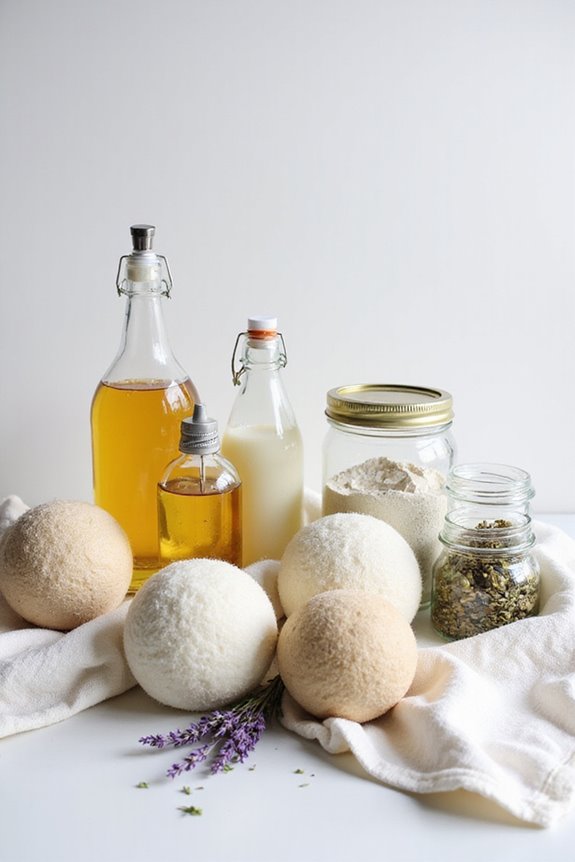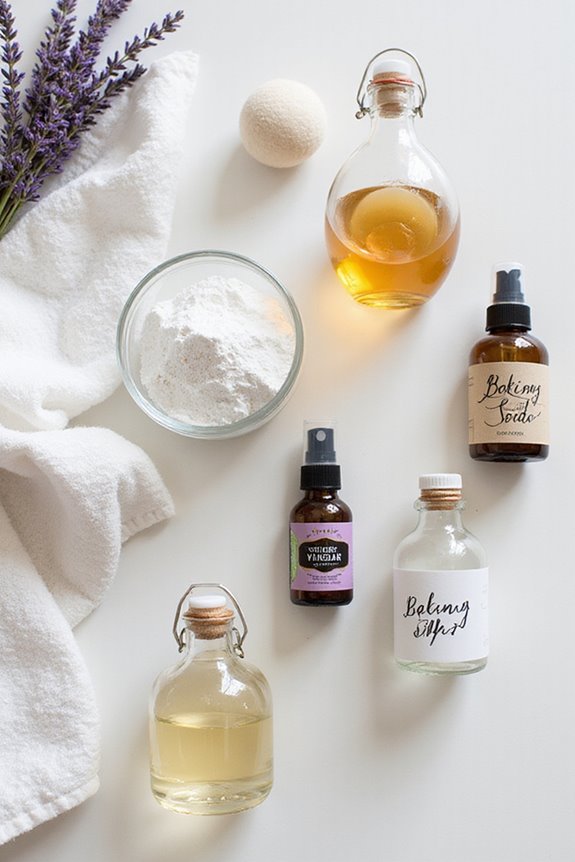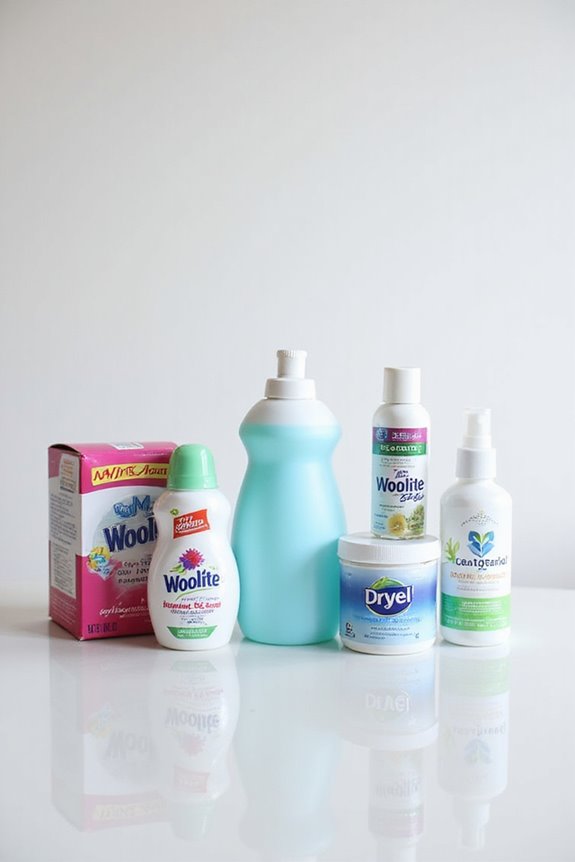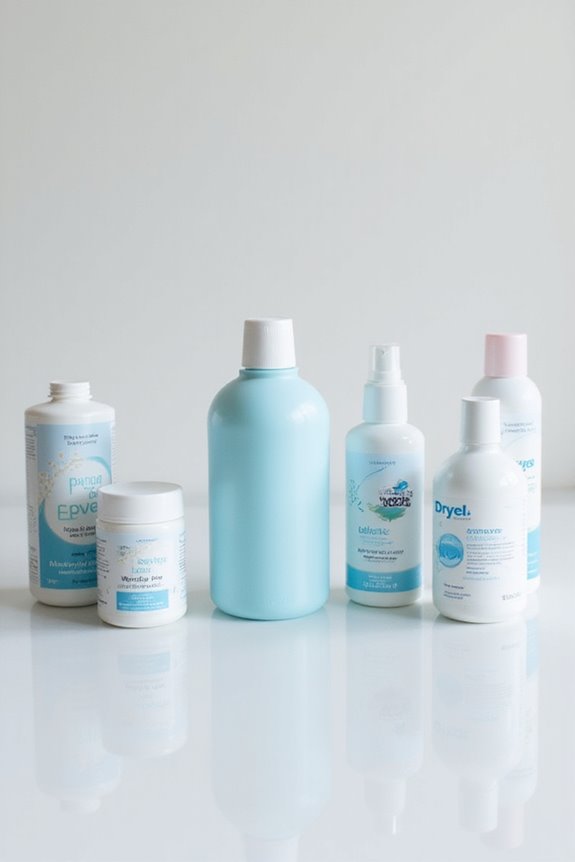To prevent static on linen, we should choose natural fabrics like linen or cotton, which absorb moisture well. Using white vinegar in the rinse cycle works wonders as a softener, plus it cuts down on static—who’d have thought? Keeping our indoor humidity between 40% and 60% is key, and using wool dryer balls can help, too. Don’t forget to avoid over-drying! There’s more to learn about tackling static, so let’s keep exploring!
Key Takeaways
- Use natural fabrics like linen and cotton, which naturally absorb moisture and reduce static charge buildup.
- Incorporate natural fabric softeners, such as white vinegar and essential oils, during the rinse cycle to soften fabrics and minimize static.
- Maintain indoor humidity levels between 40% and 60% to prevent static cling, using humidifiers or bowls of water for moisture.
- Avoid over-drying linen and separate it from synthetic fabrics to reduce friction and static buildup during drying.
- Hang linens on metal hangers or use anti-static sprays to neutralize static electricity and prevent cling.
Choose Natural Fabrics for Your Linen
When we talk about choosing fabrics for our linen, it’s hard to ignore the benefits of natural fibers, especially if we want to prevent static. Natural fibers like linen and cotton excel in moisture absorption, which helps to dissipate static charge buildup. Unlike synthetic fabrics, they allow electrical charges to flow away, minimizing those annoying shocks.
We’ve all experienced that embarrassing static cling, right? By opting for linen, we not only enjoy its breathability but also its natural anti-static properties. Plus, linen keeps us comfortable, even in drier environments. So, when we’re selecting our linens, let’s remember the linen advantages and embrace the natural fiber benefits that keep our space static-free and cozy! Additionally, using hypoallergenic formulations can further enhance the comfort of our linen by reducing any potential skin irritation.
Use Natural Fabric Softeners and Alternatives
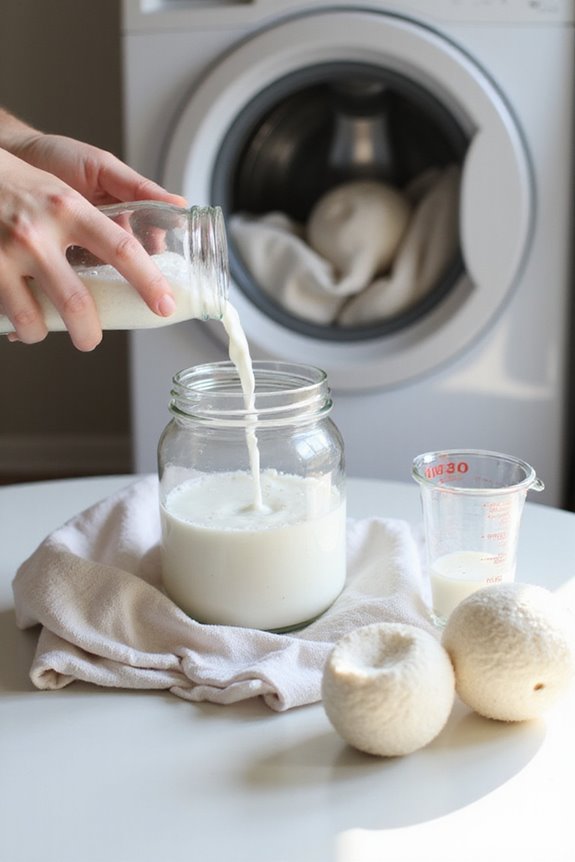
Using natural fabric softeners and alternatives can make a big difference in keeping our linen static-free. One of the best options is white vinegar. Its benefits include softening fabrics and reducing static when we add ¼ to ½ cup during the rinse cycle. Plus, we can mix in some essential oils like lavender for a lovely scent!
Another great choice is wool dryer balls. They absorb moisture, cut down on drying time, and help reduce wrinkles. Just toss a few in the dryer with our linen, and let them work their magic.
Lastly, we can even make homemade natural dryer sheets by soaking cotton fabric squares in a vinegar-essential oil mix. They’re reusable and chemical-free, which is a win-win! Additionally, using natural fabric softeners can enhance the laundry experience, especially for those concerned about skin reactions and environmental impact.
Control Humidity and Dry Air
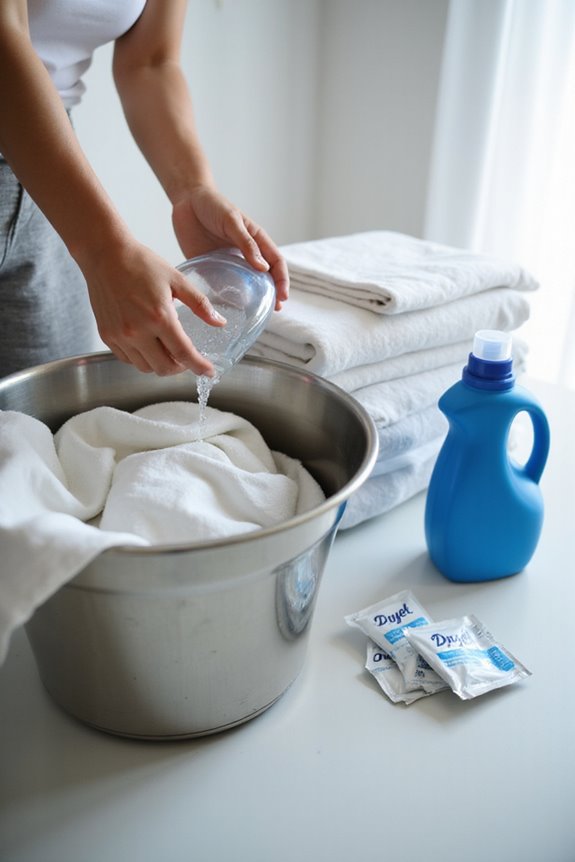
After we’ve explored how natural fabric softeners can help reduce static on our linen, it’s time to look at another important factor: humidity. When humidity levels drop below 30%, static cling becomes a real nuisance. We’ve all felt that zapping shock from our linen, especially in winter. To combat this, we should aim for a humidity level between 40% and 60%.
Using a humidifier can help us maintain these levels indoors. We can also place bowls of water near heat sources to naturally increase moisture retention. Let’s not forget about those houseplants; they’re not just pretty! They help boost humidity too. By keeping our air moist, we can greatly reduce static electricity and enjoy our linens without the shocks! Additionally, using antibacterial detergents can further enhance fabric care by minimizing odors and maintaining freshness.
Reduce Friction Causing Static
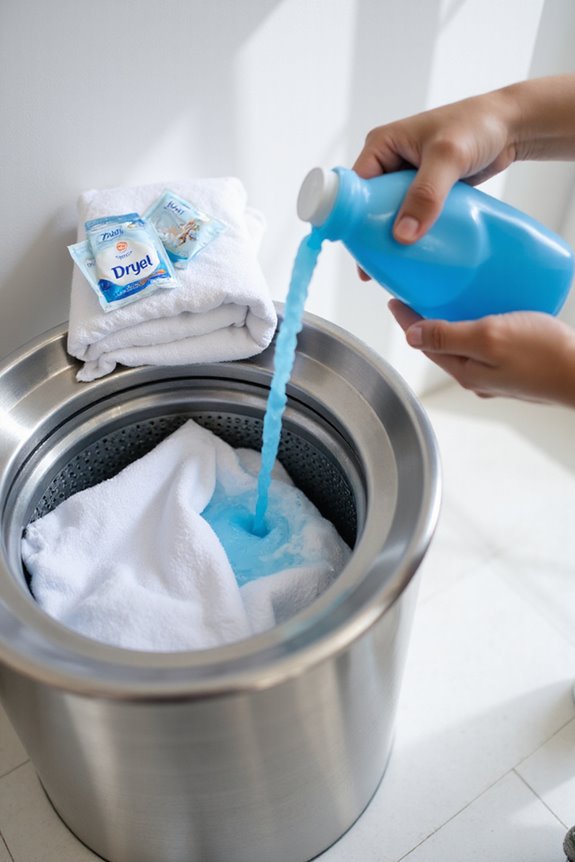
Static cling can be a real pain, especially when it’s our favorite linen that’s getting zapped. To tackle this, we need to focus on friction reduction. First, let’s not over-dry our linen. Leaving a bit of moisture helps electrons dissipate, cutting down on static. We should also separate linen from synthetic fabrics; these can spark static because they hold different charges.
Using fabric softeners or dryer sheets can also be a game-changer. They coat our linens, reducing friction and static buildup. For a more sustainable option, consider using plant-based fabric softeners, as they are gentle on sensitive skin and effective in reducing static. When drying, gentle cycles or air-drying can protect our fabric. Plus, let’s avoid overloading the dryer—less fabric collision means less static. By following these tips, we’ll keep our linen static-free and feeling great!
Neutralize Static Electricity Physically
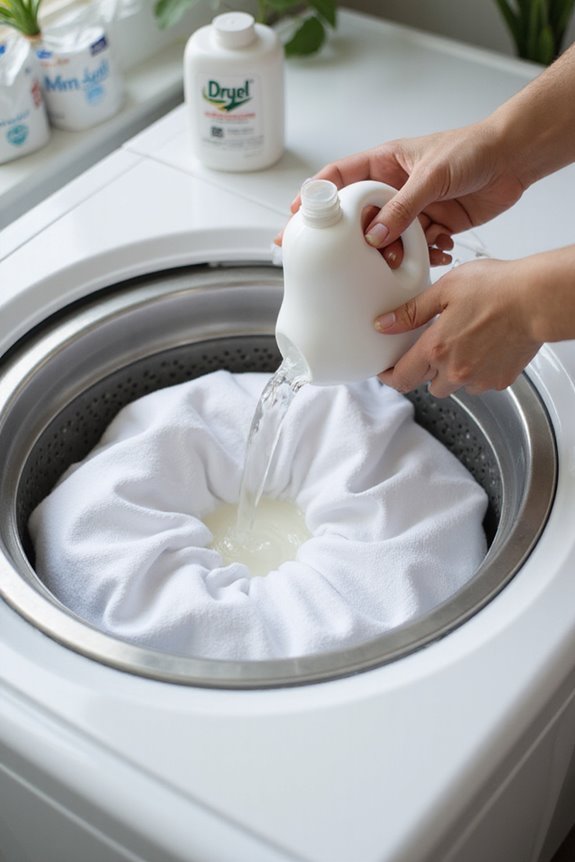
We all know how frustrating it can be when our linens cling to us like a long-lost friend, even after we’ve worked hard to reduce friction. One simple solution is to use metal conductors. Running a bare metal hanger along the linen can balance the charge and make that cling disappear. Plus, hanging our linens on metal hangers before use can help neutralize static electricity right away.
If we’re looking for convenience, anti-static sprays can be a game-changer. A light mist on our linens creates a thin layer that dissipates static. Just remember to target the areas that usually cling, like underarms. This way, we can keep our linens feeling fresh and static-free without any hassle! Many of these sprays, like Static Guard Fabric Spray, are safe on various fabrics and effective for static reduction.
Proper Laundry Care Practices
When it comes to keeping our linens in top shape, proper laundry care practices are essential. First, we should always wash linen in cold or cool water to avoid any damage. Using the gentlest cycle helps with fabric maintenance, keeping our linens safe from excessive wear. Let’s steer clear of bleach and fabric softeners too—these can weaken the fibers and lessen breathability. Remember to sort colors and wash linens separately from heavier items to prevent snagging. After washing, we can reshape our linens while they’re damp, which helps reduce wrinkles. Finally, air drying is our best friend here, ensuring our linens maintain their integrity without the risk of shrinkage. Additionally, using hypoallergenic sheets can help reduce static cling and protect sensitive skin during laundry. Happy laundering!
Frequently Asked Questions
Can Static Cling Damage Linen Fabric Over Time?
Yes, static electricity can damage linen fabric over time, impacting its longevity. We should be mindful of how static affects the fibers, causing wear and reducing the fabric’s natural luster and softness with repeated exposure.
Is It Safe to Iron Linen to Reduce Static?
When we think of ironing techniques for fabric care, it’s safe to iron linen to reduce static. By using steam and maintaining slight dampness, we can effectively manage static while preserving fabric integrity.
How Often Should I Wash Linen to Prevent Static?
We should wash linen every 3-4 wears to balance fabric care and cleanliness. This washing frequency helps maintain moisture, reducing static buildup without risking damage from overwashing or excessive wear.
Can Pets Contribute to Static on Linen?
Isn’t it ironic how our furry friends can turn our lovely linens into static shock factories? With proper pet grooming and mindful fabric care, we can minimize their contribution to our shocking experiences.
Are There Specific Brands of Linen Less Prone to Static?
When it comes to high quality linens, we’ve found brands like Menique and Magic Linen offer excellent anti-static treatments. These options not only resist static but also provide comfort and sustainability, making them great choices for us.



